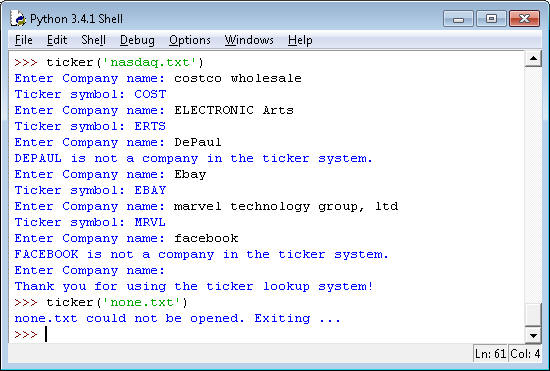

L=str(line)+','+str(line)+','+str(line)+'\n'Īlso, you should consider using os.path.join to join paths, instead of using string concatenation. Return #you may want to throw some error or so.į = open(os.path.join(folder, str(i)+'.txt'),'w+') Read back the file contents and print to screen so we can inspect the result. You can also use r+ mode as it doesn't truncate the file.
#Python open txt write code#
For example, Above code opens myfile.txt in write mode, stores the file content in filecontent variable and rewrites the file to contain 'Hello World'. To open files in read/write mode, specify 'w+' as the mode. It returns the number of characters written to a file. Next, f.write('Hello') overwrites an existing content of the myfile.txt file. 'w' specifies that the file should be writable.

After that, we open the file again, this time with the append flag, and add some extra lines. Practical Python: Learn Python Basics Step by Step - Python 3. In the above example, the fopen('myfile.txt','w') statement opens myfile.txt in write mode, the open() method returns the file object and assigns it to a variable f.

Python provides a number of ways to write text to a file, depending on how many lines you’re writing.write() will write a single line to a file.writelines() will write multiple lines to a file These methods allow you to write either a single line at a time or write multiple lines to an opened file.
#Python open txt write how to#
ĭef save_txt_individual_tracks(track,folder,i): with open('c:\commentcount.txt','r') as fp: counts fp.readline() counts str(int(counts) + 1) with open('c:\commentcount.txt','w') as fp: fp.write(counts) Note this will work only if you have a file name commentcount and it has a int at the first line since r does not create new file, also it will be only one won't append a new. In the following example, we: Write to a file just like in the previous example using Python’s with open (). How to Use Python to Write to a Text File. mode x raises an exception if the file already exists, well, you getting that exception clearly indicates that the file does exist, just remove the first two lines, w (write mode) creates a file too. If its not constant, you can checkout os.path.exists to check if the directory exists or not, and if it doesn't exist, create one using os.mkdir. If the directory - TA92903URN7ff/ is constant, try creating it and then running. Got error in my code, because the directory blah/ does not exist. You are getting the error because the directory - E:/phoneTracks/TA92903URN7ff/ does not exist.Įxample to show this error - In : open('blah/abcd.txt','w+')įileNotFoundError Traceback (most recent call last)įileNotFoundError: No such file or directory: 'blah/abcd.txt'


 0 kommentar(er)
0 kommentar(er)
